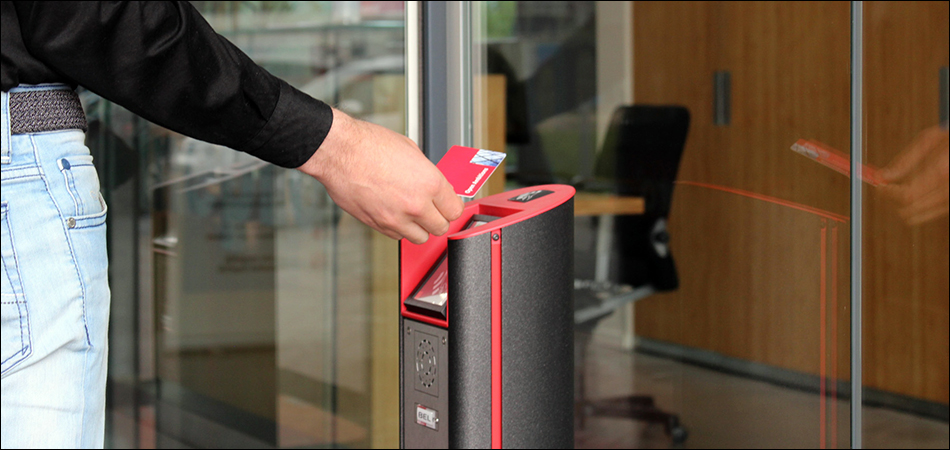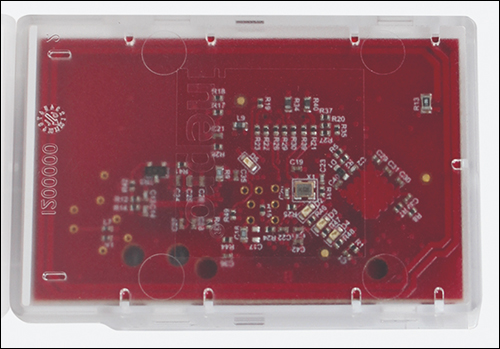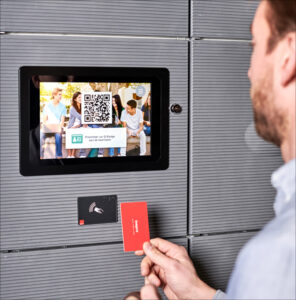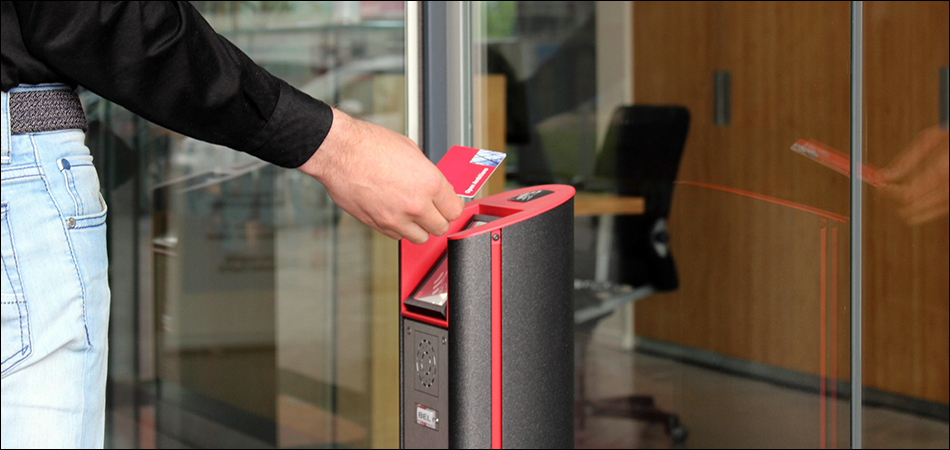Technology company Inepro (short for Innovative Netherland Products) is selling its recently released Spider Core RFID reader to secure device manufacturers, in order to provide multiple RFID technologies, as well as Bluetooth Low Energy (BLE), on a single device. The Spider, which comes with LF and HF RFID, in addition to BLE and Near Field Communication (NFC), can be built into printers, door locks, vending machines and other secured objects. Companies that manufacture such security-protected devices have begun to build the matchbook-size reader into their products to provide flexibility and security for consumers who want to authenticate themselves via their smartphones.
The Spider reader was named after the ubiquitous arachnids because they share many traits, according to Marcus Van Der Waal, Inepro’s chief knowledge officer. A spider sits at the center of a Web sensing the slightest changes, at which time it responds by pouncing on its victim. That is how the latest Inepro product works as well, he explains, but without there being a victim. “The Spider Core serves as the central point of accessing a service in a device,” he says. The system senses changes in the electric field, be they one of multiple RFID frequencies or BLE, and responds in kind.

The Spider comes with a secure element (SE) for improved security, Van Der Waal says. For device manufacturers, the product enables users to be authenticated via a unique ID number encoded on a contactless card, bracelet or tag, or on a user’s smartphone. Once the ID is authenticated, the individuals can gain access to a building, make use of a secure printer, pay at a vending machine or complete a transaction at a cash register.
The Netherlands-based company has been providing identification solutions for 25 years, initially with payment technologies for unmanned devices such as hot shower systems, fuel tanks and lockers at recreations sites, as well as copiers, printers and vending machines, The firm recently developed an access-control solution that can be used to unlock gates and entrances, or to access a machine based on an individual’s approved identification. The company sells its offerings in Europe, Australia, the United Kingdom, the United States, and the rest of North and South America.
The access-control and payment solutions were provided initially for use with magstripe cards, Van Der Waal says, then later included readers that could interrogate LF RFID at 125 kHz or HF 13.56 MHz Mifare cards. As Inepro began accommodating a growing number of technologies for data transmission, he explains, it began building its own reader, and it was among the pioneers to create a reader that could interrogate both LF- and HF 13.56 MHz-based IDs for self-service devices.
 NFC enabled a new payment and access model by capturing unique IDs directly from smartphones. Inepro first started allowing access control via mobile phone with the addition of NFC functionality to some Android-based phone models. The company developed its NFC Me app (now available in both iOS and Android versions), which enables users to approve an authentication via phone. To launch that functionality, the firm worked with Vodafone and Samsung to test the technology with Samsung’s Galaxy S2 smartphone.
NFC enabled a new payment and access model by capturing unique IDs directly from smartphones. Inepro first started allowing access control via mobile phone with the addition of NFC functionality to some Android-based phone models. The company developed its NFC Me app (now available in both iOS and Android versions), which enables users to approve an authentication via phone. To launch that functionality, the firm worked with Vodafone and Samsung to test the technology with Samsung’s Galaxy S2 smartphone.
It wasn’t until NFC functionality in Apple iPhones was opened to developers that the NFC version ended up in wide use. But recently, Van Der Waal says, businesses have been interested in leveraging BLE functionality as another potential access technology. For device manufacturers, the use of BLE means one more hardware module would need to be installed in their product offerings, increasing the solutions’ complexity, so the Spider RFID reader family resulted.
The Spider Core, the smallest in size, is designed for integration into secured devices. Businesses are installing it for secure access to computers or other devices, or for payment functionality at a cash register. The Spider Desktop MFP is designed to be mounted on the side of a multifunctional printer, while the Spider Pocket can be integrated into an HP printer or locker. The different readers vary slightly in dimensions but are each about the size of a matchbox.
Thanks to the SE, Van Der Waal says, the data is encrypted from cards or phones, as well as with the hosting device (a laptop, for instance). If a person uses the technology on an unsecured reader, there will be a weak link. Therefore, the SE encrypts the data it receives from the phone, along with the data being transmitted through the device. In addition to the device supporting three RFID frequencies, its LF functionality covers the band from 100 to 150 kHz, providing greater flexibility for LF-based products using 125 or 134 kHz.
 With the release of the Spider, Inepro now offers two apps: NFC Me and BLE Me. Typically, those authenticating themselves via their phones would download the Inepro app, use their own biometric security for the phone’s operation, and then come within range of a Spider-secured device—a coffee maker, for example. The Spider would detect the presence of the phone running the app via RFID or BLE, and it would transmit a message displayed by the phone, inviting the user to link their authentication with the device’s account. Once that was accomplished, they would simply select “approve” each time they came within range and were invited in the app to authenticate.
With the release of the Spider, Inepro now offers two apps: NFC Me and BLE Me. Typically, those authenticating themselves via their phones would download the Inepro app, use their own biometric security for the phone’s operation, and then come within range of a Spider-secured device—a coffee maker, for example. The Spider would detect the presence of the phone running the app via RFID or BLE, and it would transmit a message displayed by the phone, inviting the user to link their authentication with the device’s account. Once that was accomplished, they would simply select “approve” each time they came within range and were invited in the app to authenticate.
The system identifies the phone’s ID for each transaction and forwards that information to the company’s own software for the purpose of access control or payment. That means, for instance, that a coffee maker can be unlocked and accessed, or a user could be charged accordingly if payment transactions were part of the setup. In addition to being used for access to buildings, restricted areas or machines, the Spider is also being utilized for electric vehicle charging stations. Any company that requires authentication for self-service devices, Van Der Waal says, could employ the technology.
The goal for manufacturers, Van Der Waal explains, is to enable them to offer more flexible products rather than multiple offerings, each dedicated to a specific communication technology—they can now offer a one-size-fits-all solution. “If you are a reseller of multi-functional printers or vending machines,” he states, “and you have one customer asking for Mifare and another asking for BLE,” then companies must make a different product to meet each need. If a company needs to supply products fast, it must have all the different products readily available in stock.
In addition, the Spider offers bi-directional transmissions so it can receive firmware upgrades remotely. The system includes an app that enables first-time users to program and configure the Spider in the device, thereby reducing the need for a manufacturer’s personnel to visit customers physically. It has a five-year warrantee but offers lifetime firmware upgrades, and the reader is typically sold by reseller companies for US$150, according to Inepro.


